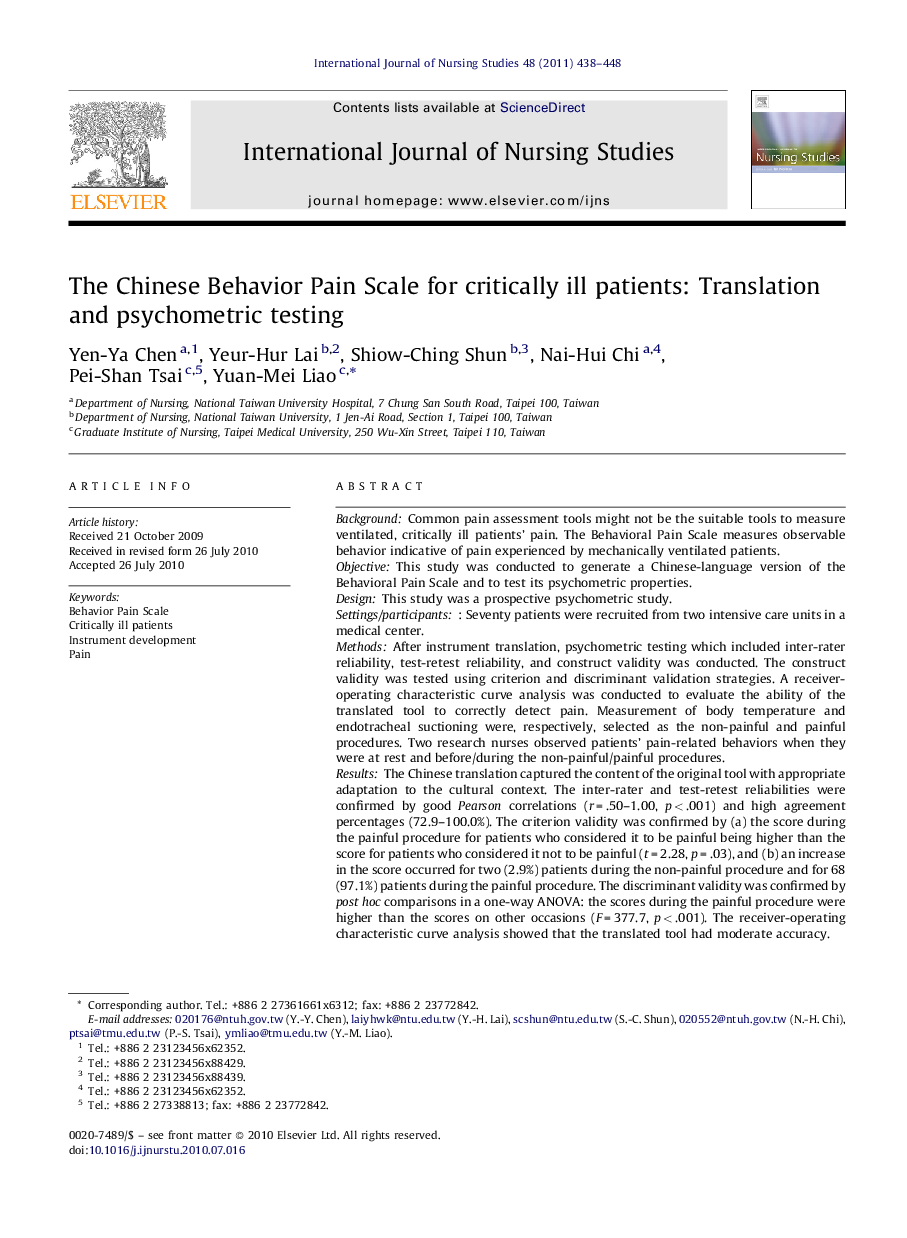| Article ID | Journal | Published Year | Pages | File Type |
|---|---|---|---|---|
| 1076783 | International Journal of Nursing Studies | 2011 | 11 Pages |
BackgroundCommon pain assessment tools might not be the suitable tools to measure ventilated, critically ill patients’ pain. The Behavioral Pain Scale measures observable behavior indicative of pain experienced by mechanically ventilated patients.ObjectiveThis study was conducted to generate a Chinese-language version of the Behavioral Pain Scale and to test its psychometric properties.DesignThis study was a prospective psychometric study.Settings/participants: Seventy patients were recruited from two intensive care units in a medical center.MethodsAfter instrument translation, psychometric testing which included inter-rater reliability, test-retest reliability, and construct validity was conducted. The construct validity was tested using criterion and discriminant validation strategies. A receiver-operating characteristic curve analysis was conducted to evaluate the ability of the translated tool to correctly detect pain. Measurement of body temperature and endotracheal suctioning were, respectively, selected as the non-painful and painful procedures. Two research nurses observed patients’ pain-related behaviors when they were at rest and before/during the non-painful/painful procedures.ResultsThe Chinese translation captured the content of the original tool with appropriate adaptation to the cultural context. The inter-rater and test-retest reliabilities were confirmed by good Pearson correlations (r = .50–1.00, p < .001) and high agreement percentages (72.9–100.0%). The criterion validity was confirmed by (a) the score during the painful procedure for patients who considered it to be painful being higher than the score for patients who considered it not to be painful (t = 2.28, p = .03), and (b) an increase in the score occurred for two (2.9%) patients during the non-painful procedure and for 68 (97.1%) patients during the painful procedure. The discriminant validity was confirmed by post hoc comparisons in a one-way ANOVA: the scores during the painful procedure were higher than the scores on other occasions (F = 377.7, p < .001). The receiver-operating characteristic curve analysis showed that the translated tool had moderate accuracy.ConclusionsThe Chinese-language version of the Behavior Pain Scale was shown to be reliable and valid for adult patients on mechanical ventilation in medical intensive care units when exposed to rest, a non-painful procedure, and a painful procedure. An assessment tool including pain-related observable indicators can be used as one source to assess a patient's pain, especially with ventilated or non-communicative patients.
